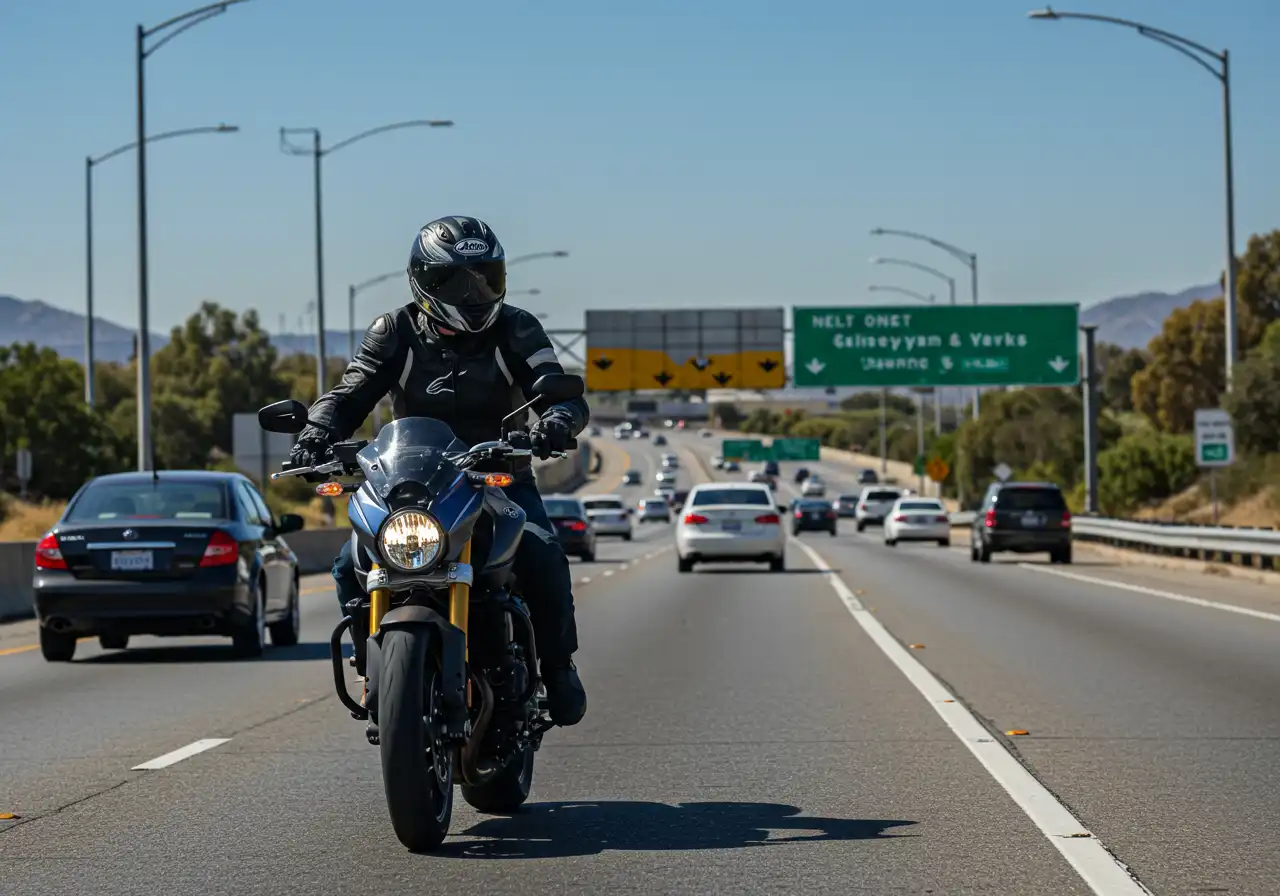The dawn of 2025 brings important updates to California motorcycle law that every rider should understand. These changes aren’t just legal technicalities — they directly impact how your rights are protected, how injury claims are evaluated, and how insurance companies may respond after a crash.
What’s New in California’s 2025 Motorcycle Laws
Here are some of the major legal changes coming into effect (or being clarified) in 2025 that affect riders:
1. Raised Minimum Insurance Requirements (SB 1107)
 Beginning January 1, 2025, California’s liability coverage minimums for motorcycles increase significantly under Senate Bill 1107. Riders must now carry at least:
Beginning January 1, 2025, California’s liability coverage minimums for motorcycles increase significantly under Senate Bill 1107. Riders must now carry at least:
- $30,000 for bodily injury or death to one person (up from $15,000)
- $60,000 total for bodily injury or death per accident (up from $30,000)
- $15,000 for property damage (up from $5,000)
These changes aim to ensure better protection for victims of crashes, but they also mean higher premiums for many riders. If you’re riding with lower coverage, your claim could be partially denied or reduced. Always verify your policy is up to date well before an accident occurs.
2. Stricter Helmet Compliance & Enforcement
Helmet laws remain a cornerstone of rider safety in California. Under updates in 2024 and early 2025, law enforcement may more strictly enforce DOT-certified helmet compliance after crashes. A helmet that lacks certification or shows visible damage could lead to disputes about fault or the severity of head injuries.
Tip for Riders: Keep your helmet, receipt, and gear — document that your gear met legal standards before any crash. If your helmet is damaged, preserve it; insurers might inspect it later.
3. Lane-Splitting Clarifications & Liability Risk
California remains one of the few states that permits lane splitting, but 2025 updates emphasize that legality doesn’t mean impunity. The California Highway Patrol and courts may more closely scrutinize how and when lane splitting was done — speed differential, proximity to vehicles, sudden maneuvers — when assigning fault.
Riders should be able to show they rode safely and prudently if lane splitting is involved in their crash. Dashcam footage, witness statements, or data (GPS/speed logs) can help counter arguments that the lane splitting was reckless or contributed to the collision.
4. License Plate & Concealment Rules (AB 2111)
 New in 2025 is AB 2111, which targets license plate concealment, especially where the intent is to evade detection by enforcement systems (like cameras). Concealing or painting over a plate can now lead to stricter penalties. In accident cases, a hidden or obscured plate may raise red flags in investigations or insurance reviews.
New in 2025 is AB 2111, which targets license plate concealment, especially where the intent is to evade detection by enforcement systems (like cameras). Concealing or painting over a plate can now lead to stricter penalties. In accident cases, a hidden or obscured plate may raise red flags in investigations or insurance reviews.
5. Sideshow / Street Takeover Laws (AB 1978, AB 2186, AB 2807, AB 3085)
The DMV publicly highlighted a package of laws taking effect January 1, 2025, targeting street takeovers, illegal sideshows, and speed exhibitions. Under these laws, vehicles used in street exhibitions may be impounded, even without arrest. While these laws focus more on public safety enforcement, they reflect growing scrutiny of aggressive or risky riding behaviors — especially in urban and event settings.
How These Changes Affect Your Injury Claim Strategy
Knowing the law is one thing; applying it to protect your compensation is another. Here’s how these legal updates could influence how your claim is handled:
Insurance Denials or Reductions
Insurance companies often look for technical reasons to reduce payouts. If your policy did not meet the new minimums at the time of your crash, the insurer may claim non-compliance or expose gaps. Having current proof of coverage is essential.
Increased Disputes Over Fault & Evidence
With lane splitting under added scrutiny and helmet compliance enforced more strictly, opposing parties may try to argue comparative fault more aggressively. Expect insurers to question whether your gear, behavior, or lane splitting contributed. Solid evidence and the right legal narrative become critical.
Evidence Preservation Becomes More Crucial
Because legal standards are shifting, preserving all possible evidence is even more important. This includes:
- Damage to helmets and gear
- Crash scene photos and video
- Vehicle damage, skid marks, positions
- Witness statements, surveillance footage
- Insurance policy documents, proof of compliance
Any missing piece may be used against you in negotiations or court.
What Riders Should Do Now to Stay Protected
To position yourself well for a safe ride *and* strong legal footing, here are best practices:
- Upgrade your insurance: Make sure your policy meets the new 2025 minimums (or better).
- Retain your gear and proof of purchase: Keep boxes, receipts, and helmet certification labels.
- Document rides: Use dashcams, phone GPS logs, or ride apps to create a record of your movements, especially lane splitting.
- Pre-crash inspections & maintenance: Good condition of bike and brakes can be relevant in crash analysis.
- Learn new rules now: Familiarize yourself with updated lane-splitting guidelines, plate rules, and sideshow bans so your behavior is defensible if challenged.
- Consult a specialized attorney early: Particularly one experienced in California motorcycle law changes. The right legal counsel can anticipate insurer defenses and guide your claim appropriately.
Conclusion
California’s 2025 motorcycle law changes bring new layers of legal complexity and accountability for riders. Whether you’re concerned about your insurance coverage, how your helmet will be scrutinized, or how lane splitting may be evaluated in court — the bottom line is this: knowledge and preparation matter more than ever.
If you’ve suffered injuries in a motorcycle crash in San Francisco or elsewhere in California and want guidance on how these laws apply to your case, reach out to us today for a free consultation. Our firm stays current with legal developments so we can protect your rights every step of the way.


